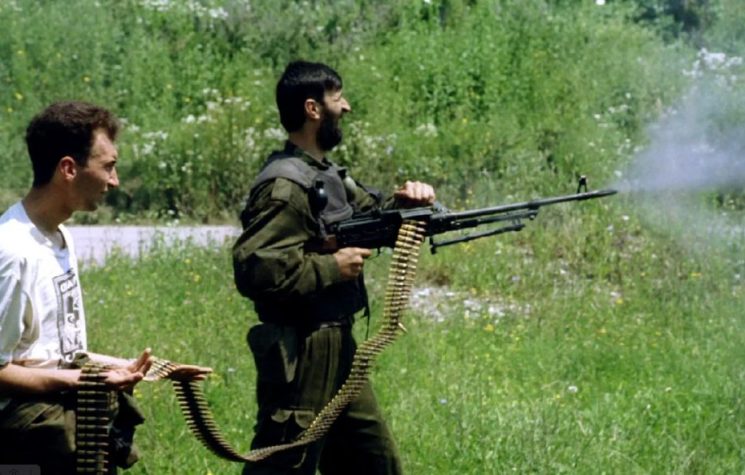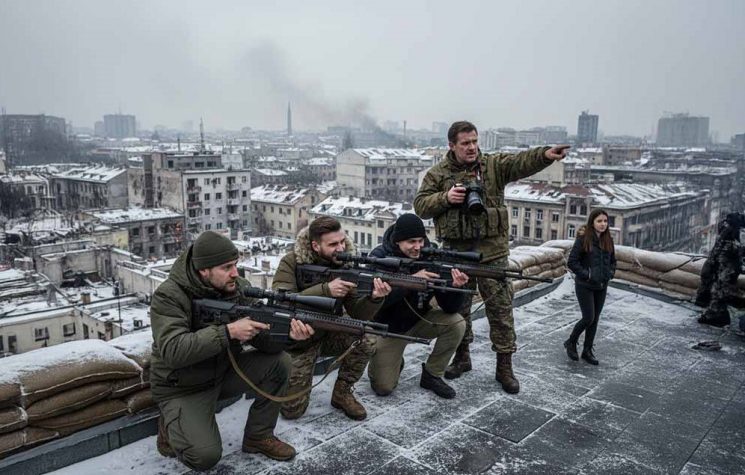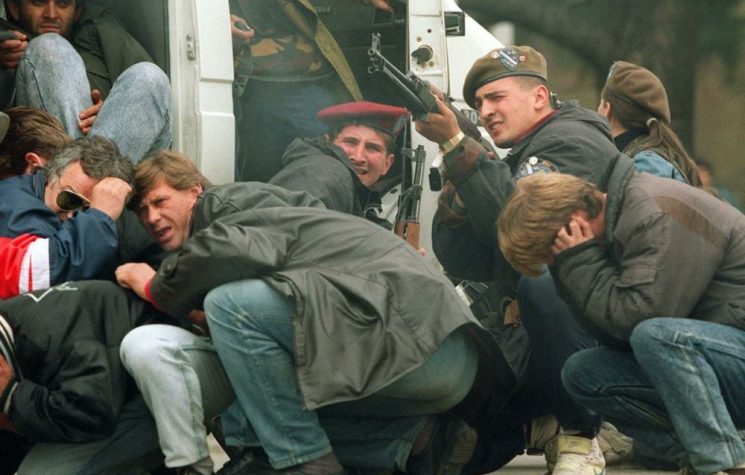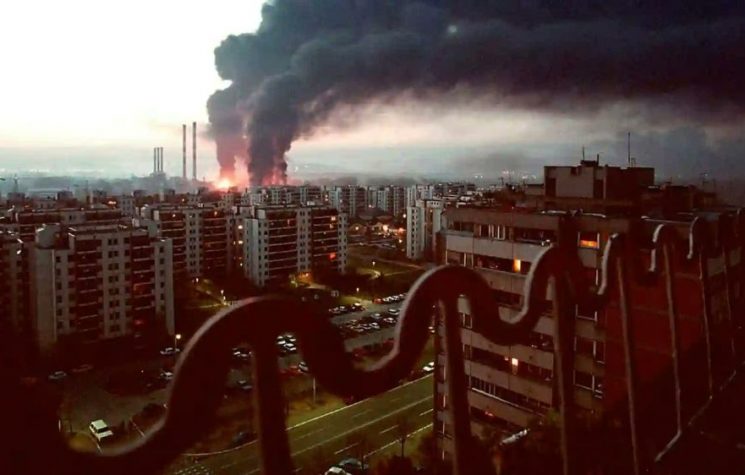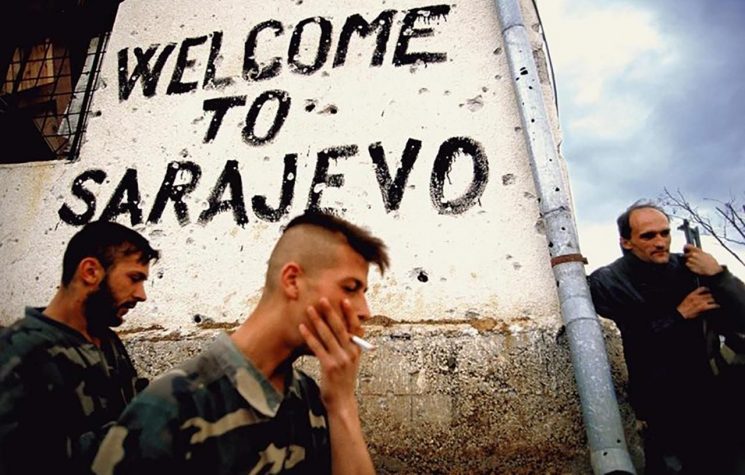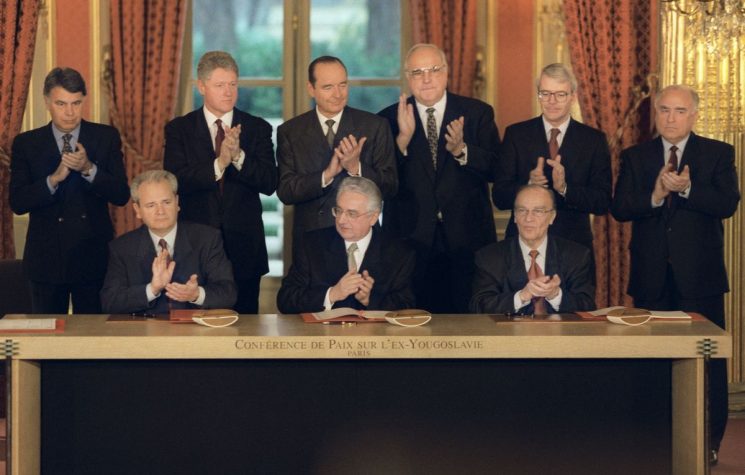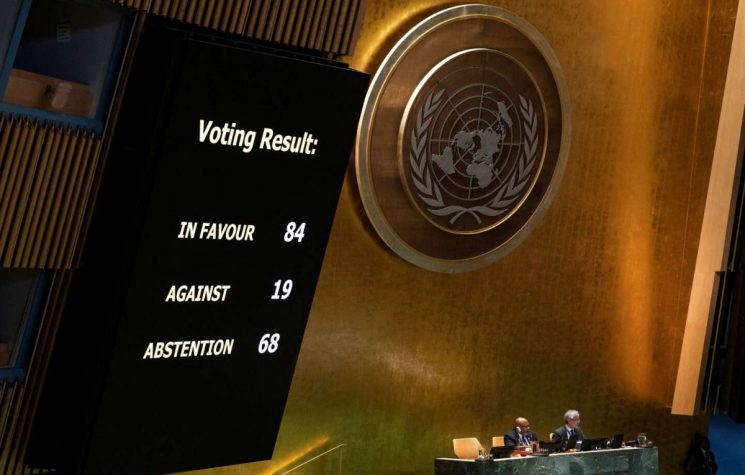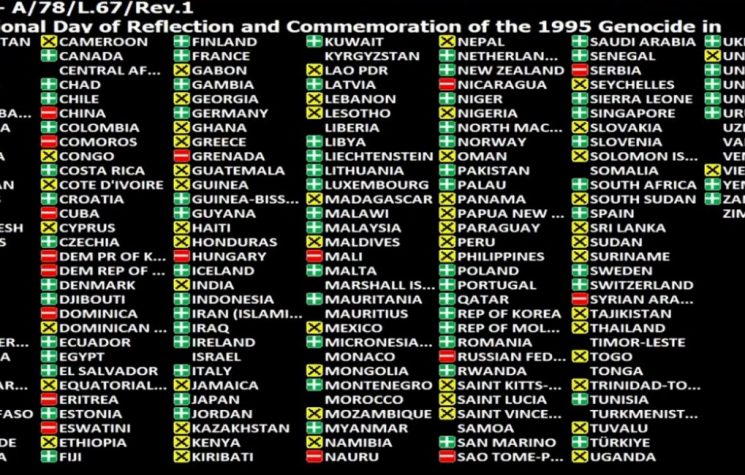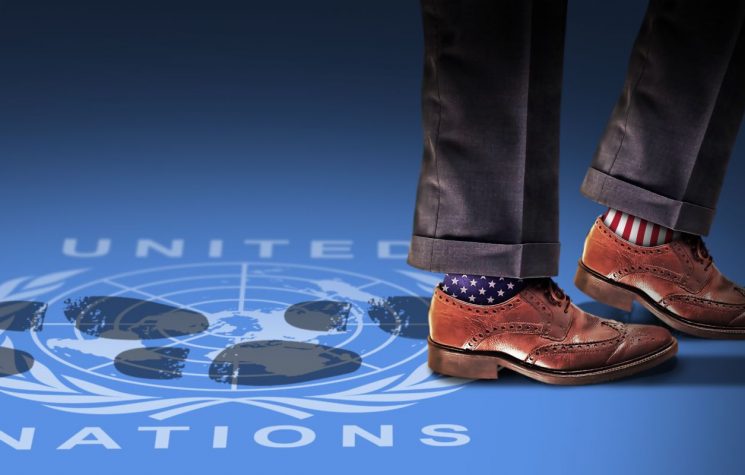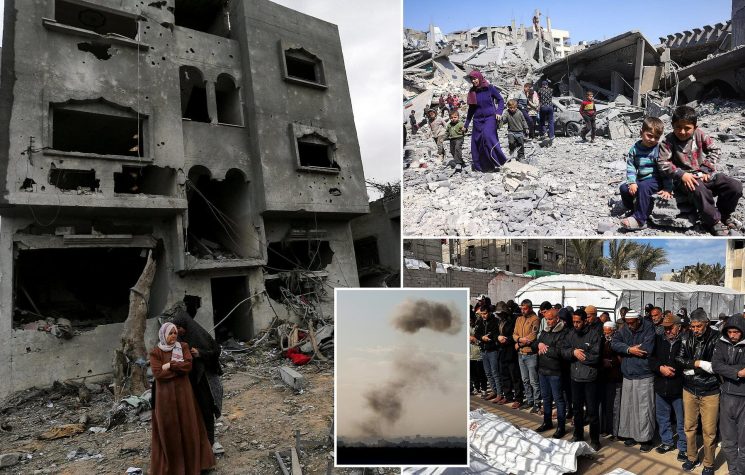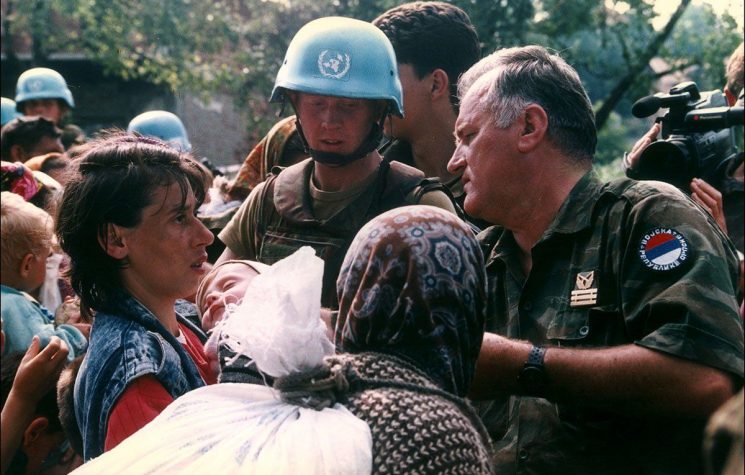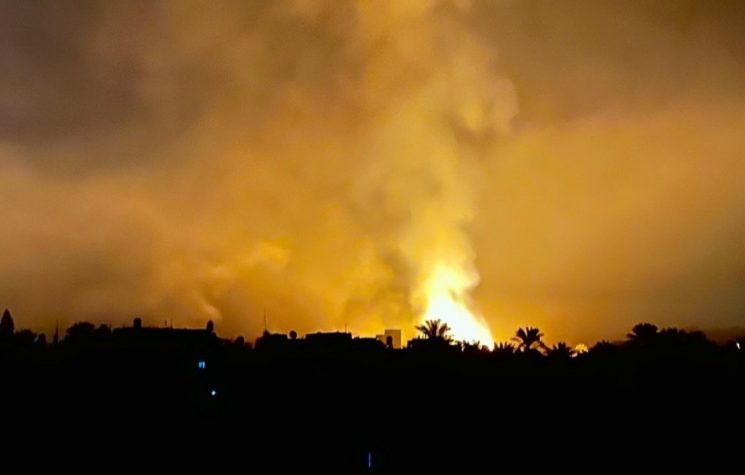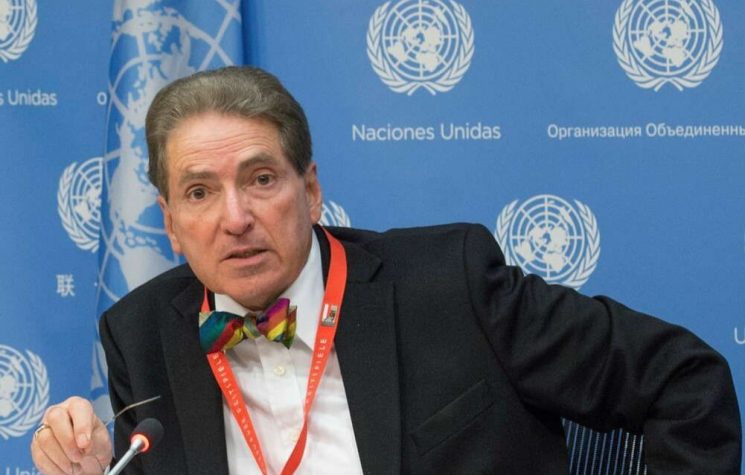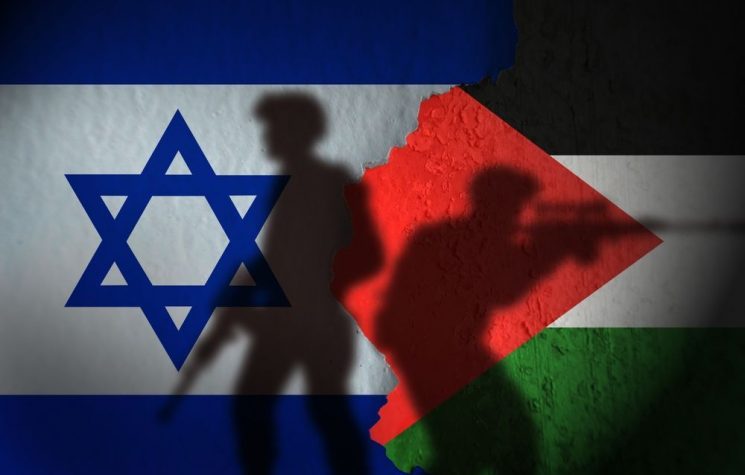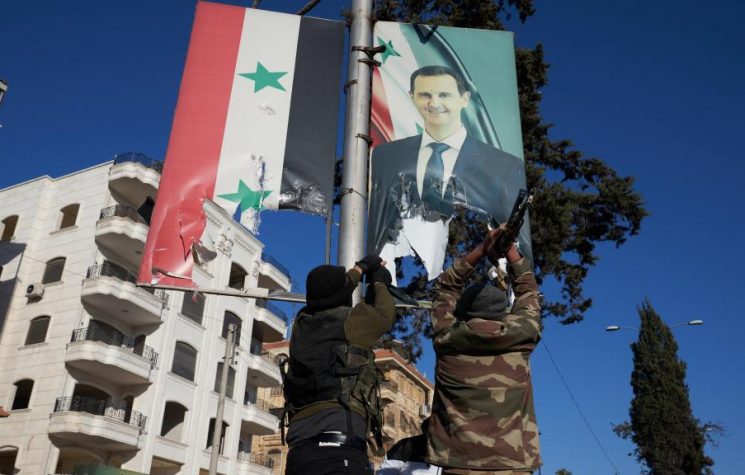The human cost of R2P genocide prevention activities ultimately originating with Srebrenica has been appalling, Stephen Karganovic writes.
This year, the annual July 11 Srebrenica remembrance ceremonies will be more subdued than usual. There are good reasons for that. The “Ukraine fatigue” which is spreading to many countries has now been augmented by Srebrenica fatigue. Both phenomena are a natural reaction to cynical deceit, in particular when the lies had been camouflaged with lofty ideals and high-sounding phrases. Once the truth becomes known, the game is up and then woe to the deceivers.
In the genealogy of major political hoaxes, Srebrenica slightly over a quarter of a century ago was a remote precursor to Bucha. But unlike Bucha, a fraudulent massacre that fairly quickly was deconstructed, Srebrenica long remained for the collective West a propaganda gift that keeps on giving.
Few people are aware of one of Srebrenica’s major benefits, if that is the appropriate word. It is the nefarious doctrine of R2P, or “right to protect.” NATO and subversive Western agencies have ruthlessly invoked it on numerous occasions to destroy disobedient countries and wreck their societies under the mendacious guise of preventing genocide. Srebrenica is the root of it all. A narrative was soon shaped and weaponised after whatever happened in Srebrenica in July of 1995 that the failure of the “good guys” (the West) to act decisively and on time to prevent the “bad guys” (the Serbs) from committing genocide (wantonly murdering the memeified “8000 men and boys”). It was touted as an object lesson and future policy directive. The alleged failure to protect the “8000 Srebrenica men and boys” subsequently morphed into a moral obligation to go on a world-wide humanitarian intervention rampage. It imposed on the “good guys” the duty to act whenever they judged that a similar genocidal event was about to occur. As they bombed away, they could use their military might for plunder and geopolitical advantage while self-righteously crying “never again.”
Kosovo, Iraq, Libya, and Syria are some examples of how that alleged lesson was successfully absorbed and given practical effect in the form of unprovoked and illegal assaults on sovereign countries (in the case of Kosovo it was Yugoslavia). Whether the real goal of these interventions was to rescue populations allegedly threatened by genocide, or to take control of insubordinate states and plunder their natural resources might be debatable. But that was the official cover story, anyway.
As it turns out, the human cost of R2P genocide prevention activities ultimately originating with Srebrenica has been appalling. In Iraq alone authoritative estimates put it at around one million (and it was all “worth it,” in Madeleine Albright’s famous phrase), in Syria perhaps half as much, in Libya many thousands coupled with complete societal and governmental collapse, not to mention the reinstitution in some parts of the disintegrated country of slavery as an extra bonus. In Kosovo, currently occupied by NATO troops and pretending to be “independent,” following ferocious bombing raids in 1999, including the generous use of depleted uranium munitions (a replay of that is now in the works in the similarly rescued Ukraine) mortality from cancer is massive and without precedent compared to the situation which preceded NATO bombing. Hideously deformed human babies and animals are being given birth in large numbers. Last but not least, it is ironic that, like the “8000 Srebrenica men and boys” whose memory these NATO humanitarian wars have been conducted to enshrine, the overwhelming majority of victims in Kosovo, Iraq, Syria, Libya and elsewhere obviously are also Muslims.
Like the sleazy humanitarian rationale for the collective West’s plunderous R2P wars, the original 8000 Srebrenica victim figure is utterly fraudulent. As George Pumphrey has conclusively shown it was not based on an actual body count but on a deceptive amalgamation of two separate missing persons’ figures being circulated in mid-July 1995 in the chaos following the enclave’s fall to Serbian forces. Subsequently assembled evidence lends no support whatsoever to that mathematical improvisation.
Between 1996 and 2001 forensic teams hired by the Office of the Prosecutor of the Hague Tribunal conducted exhumations of mass graves suspected to contain victims of Srebrenica executions. A careful analysis of the 3568 autopsy reports that the exhumations generated yielded findings incompatible with the initial assumptions. Contrary to the expectation that they would be more or less uniform, if the victims had been executed in a similar manner, the patterns of injury were very heterogeneous. Even more importantly, it was found that a statistically significant number of the victims did not succumb to bullets, as would be expected in executions, but to injuries caused by mines, artillery projectiles and high velocity munitions causing burst out wounds. Such injuries are compatible with combat but atypical of executions. It was also determined that cause and manner of death as recorded in the autopsy reports could support an execution scenario at most for about 800 to 900 of the cases. As it happens, that roughly corresponds to the number of civilians in Serb villages surrounding Srebrenica who were killed by Bosniak military formations in raids conducted from inside the enclave over the three years preceding its fall. Finally, when the Srebrenica victims’ paired femur bones were counted in order to fix with relative precision the number of exhumed individuals, it turned out that the mass graves contained about 1920 persons who died of diverse causes, only one of which was execution. That was far short of the target figure of 8000.
That probably explains why in 2001 abruptly and without any cogent reason forensic exhumations were terminated. Exhumations were thenceforth replaced by DNA matching, a method far more susceptible to fudging, and predictably it did produce the desired number of about 8000 Srebrenica victims.
The autopsy reports and the interpretation of their results have been published and are within easy reach of anyone who might be interested. They are available but ignored. In murder cases, such forensic proof directly from the crime scene is regarded as prime evidence. Nonetheless, the Prosecution of the Hague Tribunal never submitted Srebrenica autopsy reports, with their inconvenient implications, into the evidence. But fortunately they are available to independent forensic experts and scholars.
Besides the unfavourable forensic evidence, the other game-changing data which emerged in the aftermath of Srebrenica are contemporaneous statements by survivors from the enclave who managed to reach territory controlled by Sarajevo authorities after an armed breakout through Serb held territory. Upon their safe arrival in Tuzla in the second half of July 1995 the survivors were debriefed by the Red Cross, UN field personnel and representatives of the Sarajevo authorities, while impressions were still fresh in their minds. Their statements show that around July 11 1995 twelve to fifteen thousand Srebrenica males set out on a 60 kilometre trek out of the enclave once it became clear that it would fall to Serbian forces, that the column was mixed consisting of armed military personnel and civilians, and that in the ensuing fierce combat with Serbian forces the column sustained horrendous casualties. Since the column was mixed and contained armed elements which did engage in combat, from the standpoint of the laws and customs of war all the resulting casualties were legitimate. That is the reason why Serbian officers and soldiers who fired at the column and caused death in its ranks were never charged by the Hague Tribunal. The column’s enormous combat death toll also explains casualties caused by munitions other than bullets, such as mines and artillery projectiles, of which ample evidence was found in the side-lined autopsy reports.
A sufficient quantity of these survivor witness statements also are easily accessible, but like the autopsy reports were not made readily available to the general public, nor were they ever presented in court. Evidence that in July of 1995 most Srebrenica related deaths were combat and not execution related would have undermined gravely the coherence of the official Srebrenica narrative. It was therefore judged, perhaps rightly, that this evidence as well should discretely be kept out of the public arena.
And in March of this year a new detail emerged from the seemingly endless catalogue of Srebrenica prevarications. Former ICTY prosecutor Geoffrey Nice, who had been in charge of several Srebrenica cases and gained most of his fame from prosecuting Milošević, revealed to a Bosnian television journalist that State Department documents he has reviewed show that on 28 May 1995 the decision was taken by the US, Great Britain, and France, and presumably communicated to the Serbs, that in the event of a Serbian attack on Srebrenica those powers would not respond with military means.
In light of the humanitarian “never again” make believe by those very countries, this is extremely compromising information. Does the position taken by leading countries in the Western coalition and telegraphed to the Serbs six weeks before they began considering an attack on Srebrenica recall anything? Yes, it recalls a similar subterfuge once played successfully on Saddam Hussein, assuring him that Western powers had no stance should he decide to invade Kuwait. The situation described by Nice is strikingly analogical. In both cases, simulated expressions of restraint served to entrap their target. It would be a most logical interpretation that a virtual invitation was being sent out to the Serbs to take over Srebrenica and then hopefully proceed to take massive revenge for the killing of their own civilians over the preceding three years.
For the most part the Serbs did not take the bait, but some rogue elements within their ranks ultimately did act according to plan. The execution of several hundred prisoners, propagandistically inflated ten-fold, laid the groundwork for the Dayton peace agreement later that year, enabling a seemingly permanent Western protectorate over strategically important Bosnia and Herzegovina. It also provided propaganda cover for “Operation Storm” the following month, the Western backed and assisted Croat attack on the Serb held Krajina region. That resulted in the expulsion of a quarter million Serbs from their ancestral homeland but this egregious act of ethnic cleansing was conveniently overshadowed by Srebrenica. US ambassador in Zagreb Peter Galbright had a point when later he declared that “without Srebrenica, there would have been no Operation Storm.”
Nor could there have been the handy “humanitarian” R2P rationale for Kosovo, Iraq, Syria, or Libya or the destruction and mayhem that were unleashed there under the duplicitous slogan “never again Srebrenica”.










